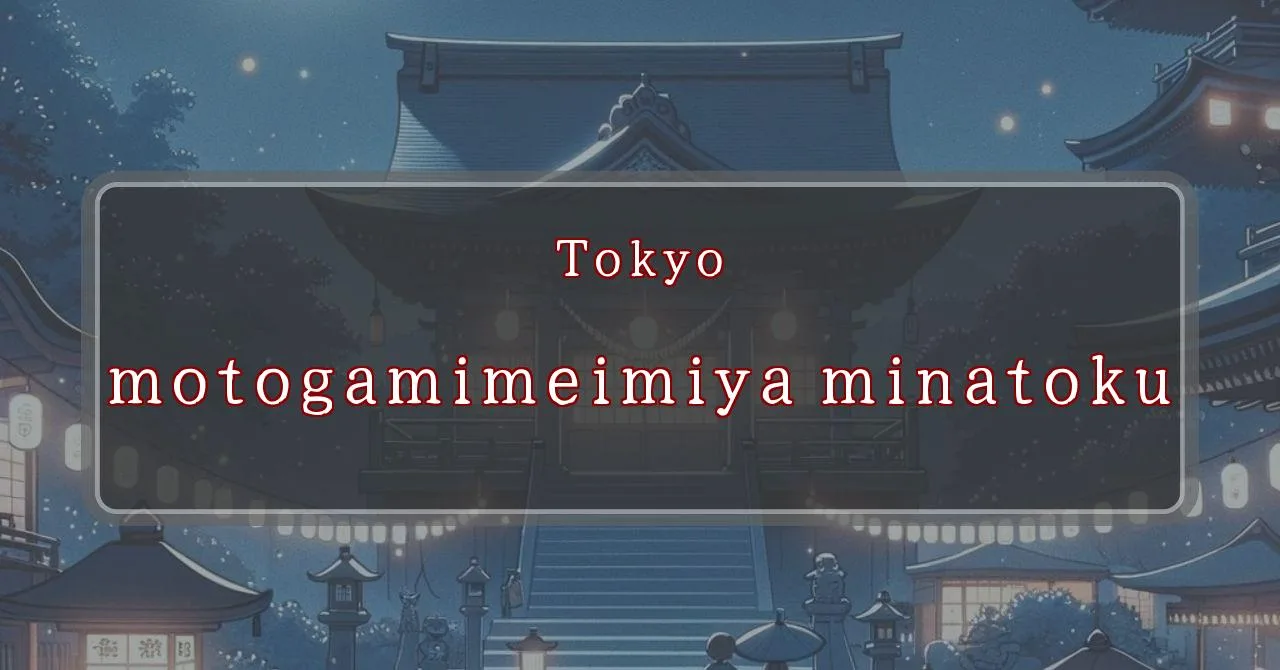Divine lights illuminate the night
Basic Information
- Name:
- Address:
- Phone Number:
- Access:
- Festival Days:
Moto Shinmei Shrine
1-4-74 Mita, Minato-ku, Tokyo 108-0073
03-3451-2493
3-minute walk from Akabanebashi Station on the Toei Oedo Line, 4-minute walk from Azabu Juban Station on the Tokyo Metro Namboku Line and Toei Oedo Line, 1-minute walk from Nakanohashi bus stop on Toei Bus No. 06 from Shinbashi Station to Shibuya Station
September 15th (Sun) and 16th (Mon), 2024
Main Events and Attractions of the Festival
The Moto Shinmei Shrine Festival is a vibrant and colorful event that attracts many visitors each year. The festival features a variety of traditional Japanese entertainment and activities, including:
Mikoshi Procession
One of the highlights of the festival is the mikoshi procession. A mikoshi is a portable shrine that is carried through the streets by a team of people. The mikoshi is believed to be inhabited by the deity of the shrine, and the procession is a way to show respect and gratitude to the deity.
Kagura Performance
Kagura is a traditional Japanese dance and music performance that is often performed at Shinto shrines. The dances are typically performed by young women, and they tell stories from Japanese mythology and folklore.
Bon Odori Dance
Bon Odori is a traditional Japanese folk dance that is performed during the Obon festival. The dance is typically performed in a circle, and it is a way to honor the spirits of the dead.
Food Stalls
There are also a variety of food stalls at the festival, where visitors can enjoy a variety of Japanese dishes, such as yakitori, takoyaki, and okonomiyaki.
Games and Activities
There are also a variety of games and activities for children at the festival, such as face painting, balloon animals, and ring toss.
Blessings and Deities
Moto Shinmei Shrine is dedicated to Amaterasu Omikami, the sun goddess and the most important deity in the Shinto religion. Amaterasu Omikami is believed to be the ancestor of the Japanese imperial family, and she is revered as a symbol of light, warmth, and life.
In addition to Amaterasu Omikami, Moto Shinmei Shrine also enshrines Suiten-gu, the god of water and rain. Suiten-gu is a popular deity among farmers and fishermen, and he is also revered as a protector of children.
Origin and History
The origins of Moto Shinmei Shrine are unclear, but it is believed to have been founded in the 11th century. The shrine was originally located in a different part of Tokyo, but it was moved to its current location in the 16th century.
Moto Shinmei Shrine has a long and rich history. It has been visited by many famous people over the years, including the Tokugawa shoguns and the Emperor Meiji. The shrine has also been the site of many important events, such as the signing of the Treaty of Kanagawa in 1854.
Tips and Notes for Visitors
Moto Shinmei Shrine is a popular tourist destination, and it is especially crowded during the annual festival in September. If you are planning to visit the shrine, it is best to go early in the morning or late in the afternoon to avoid the crowds.
When visiting Moto Shinmei Shrine, it is important to be respectful of the shrine and its customs. Be sure to remove your shoes before entering the main hall, and do not touch any of the sacred objects.
Parking Information
There is no parking lot at Moto Shinmei Shrine. However, there are several public parking lots nearby. The closest parking lot is the Akabanebashi Parking Lot, which is located a 3-minute walk from the shrine.
Popular Stalls and Food Carts in Recent Years
| Type of Stall | Description |
|---|---|
| Takoyaki | A staple at Japanese festivals. Characterized by a crispy outside and a creamy inside. |
| Jaga Butter | A simple yet popular snack of hot potatoes lavishly topped with melted butter. |
| Baby Castella | Small castella cakes, sweet and fluffy treats enjoyed by children and adults alike. |
| Grilled Ayu with Salt | Fresh ayu fish grilled whole with salt, a savory taste of Japanese summer. |
| Shaapin | A unique gourmet item influenced by foreign cuisine, with a chewy skin wrapping the filling. |
| Okonomiyaki | A Japanese grilled dish where you often choose your own ingredients for a personalized flavor. |
| Cotton Candy | A fluffy, sweet snack that’s extremely popular with children. |
| Chocolate Banana | A banana coated in chocolate, a fun and visually appealing dessert. |
| Kushiyaki | Various types of ingredients skewered and grilled, an easy-to-enjoy snack. |
| Yakisoba | Fried noodles mixed with a special sauce, a fast food favorite in Japan. |



